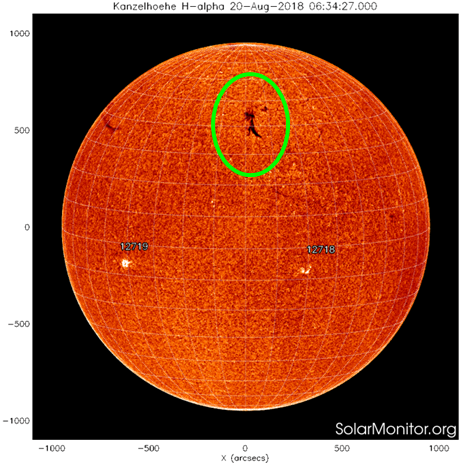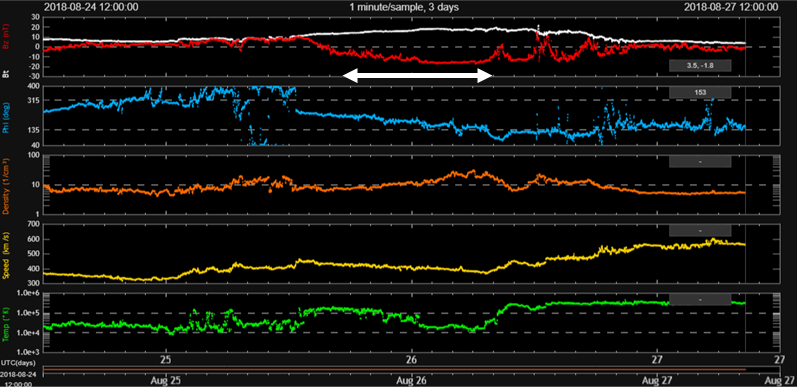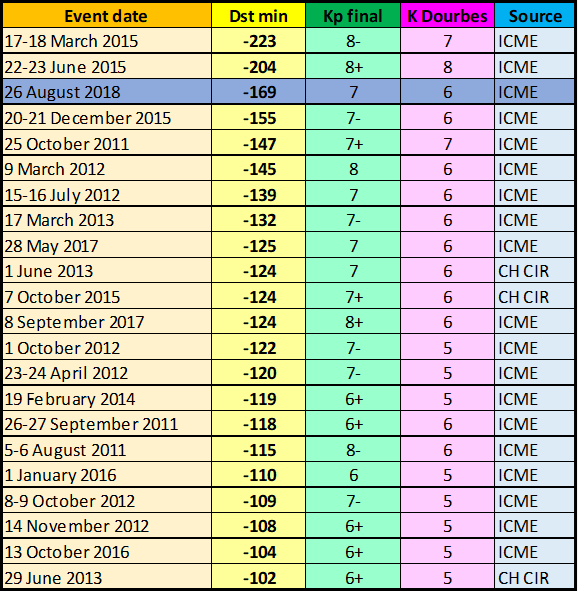A strong geomagnetic storm was observed on 26 August. The source seems to have been a modest filament eruption on 20 August (see annotated H-alpha image from Kanzelhöhe) with the associated coronal mass ejection (CME) barely visible in SOHO's coronagraphs. In fact, the feature was so weak that CACTus, a tool to automatically detect CMEs in these coronagraphic images, did not even capture the CME. With the help of STEREO-A imagery, it was determined that this CME had an earth-directed component, but its effects were expected to be quite limited.

The prediction that the CME would impact Earth proved to be correct, however the strength of this slow moving interplanetary CME was quite a surprise. Indeed, upon its arrival, the magnetic field turned strongly southward with Bz (red curve in annotated DSCOVR's solar wind chart underneath) remaining negative for almost a day, being steady near -17 nT for almost half a day. A strong geomagnetic storm was recorded (Kp = 7) with K Dourbes reaching moderate levels (K Dourbes = 6). The Dst (or storm-time Disturbance; see this STCE newsitem for more info) index, measured by 4 stations near the magnetic equator, reached -169 nT during the morning hours of 26 August.

The table underneath provides all events with Dst reaching -100 nT or lower for the current solar cycle (SC24). It gives the date of the storm, the Dst (provisional after 2015), the final Kp (both from Kyoto WDC; See also this STCE newsitem), and the preliminary K index as recorded in Dourbes. The last column gives the source of the disturbance: either an interplanetary CME (ICME), or the co-rotating interaction region preceding the high speed stream from a coronal hole (CH CIR; see this STCE newsitem for more info on CIRs). It is well-known that ICMEs can produce much stronger geomagnetic storms than CH wind streams and CH CIRs.
As can be seen, and based on the preliminary values of the Dst index, the major geomagnetic storm from 26 August is the third strongest of the ongoing solar cycle. With -169 nT, only the famous events of 17-18 March 2015 and 22-23 June 2015 were stronger (resp. -223 nT and -204 nT). On the 4th place we have the 20-21 December 2015 event (-155 nT). These are the only 4 geomagnetic storms of SC24 having reached a Dst of -150 nT or stronger. All four had ICMEs as their source, as expected.






